Benefits of CCTV: How video surveillance helps in India
According to the report by the Indian division of the Wire magazine, several India cities currently figure as the most surveilled in the world, with around 1.54 million cameras spread among India’s top 15 cities.
Indian surveillance market is expected to attain a 22.5% growth by the year 2025, growing at 25-30% annually, researchers from the electronicsb2b.com platform claim. And that prognose seems quite legit, since the India’s increase in digitalization has witnessed tremendous growth over the latest few years, and is most likely to continue.
Emerging technologies in video analytics, biometrics, face recognition, smart city, IoT sectors, powered by intelligent CCTV are becoming an extremely important part of life in Indian cities and towns.
So what are the factors fuelling growth of CCTV systems in India? Naturally, the reasons behind this growth are both internal and external, and here’s to name a few.
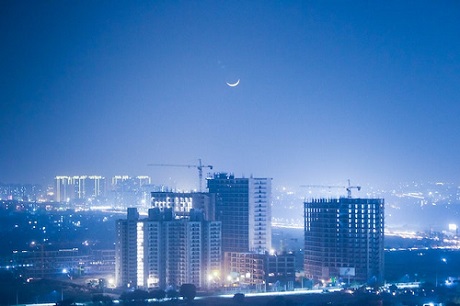
Reasons for the rapid growth of video surveillance in India
Ever since independence, India inherited historical territorial conflicts with its two neighbouring countries (both possessing over nuclear weapons) – the disputes that would result in devastating terror attacks. To counter these terror strikes India emanated expansion and modernization of its security forces and police organizations. India’s Homeland Security services had to grasp any tool within reach to provide safety to its citizens. And new technologies like video surveillance had been designed for security, satisfying the demand for it.
Besides, like in many other countries, crimes can be coming from internal sources – citizens or visitors – so the video surveillance market is additionally boosted by the need to provide a safer environment in cities and urban areas. Law enforcement agencies could use any help in their noble quest, so the government provides enhancement in armaments, equipment, technologies – the latter including installation of video surveillance systems with various video analytics and artificial intelligence capabilities.
But it’s not just the governmental sector that cares about security. Since video surveillance is becoming increasingly affordable, companies and individuals start to take advantage of CCTV on a personal level. It’s understandable because contemporary video surveillance systems do unlock unprecedented opportunities: not just perimeter protection and trespassing alerts, but far more complex video analytics with proactive staff and production control, analysis of customers and their shopping behavior, which at the end of a day helps to optimize processes, reduce losses, automate routine tasks.
Thus, video surveillance systems are in demand across all sectors in India for it is the police, companies and business, governmental agencies, and individuals who install them.
Now, of course, all these factors wouldn’t be all that substantial if not for the recent innovations in surveillance, security, and network, that have been gradually increasing overall effectiveness of various products and solutions while at the same reducing their costs. In a way, that can be probably named the biggest factor for the fast infrastructural growth of video surveillance market in India.
But anyway, no matter what the prime factor is, all these factors combined make up the success story of the video surveillance in Indian market.
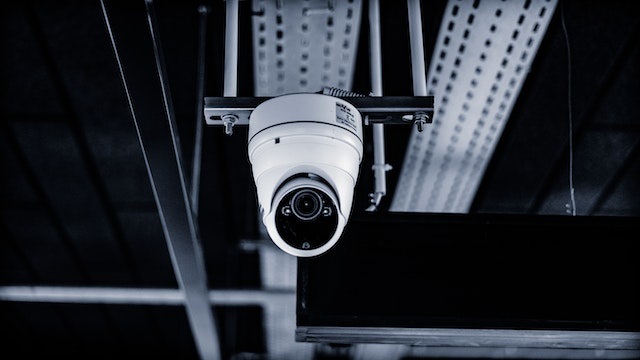
With what tasks can surveillance help in India
Contemporary video surveillance comprises over 100 features which, when combined, can cover thousands of use scenarios in nearly any verticals.
The goals that video surveillance helps achieve in India are in close relation to why the state is using video surveillance in the first place. In short this can be motto’d as ‘Modern-day challenges call for modern-day solutions’.
As mentioned before, video surveillance (in India or any other place) can play various roles in transportation (in public transport as well as airports, railway stations), municipal or educational buildings, power plants or factories, in banking or financial sectors – depending on the tasks. Let’s take a closer look at the most popular use cases of video surveillance systems in India.
Government
From the governmental perspective video surveillance systems and tools can be used for homeland security to aid in the fight against terrorist attacks. Apart from the regular security monitoring of strategic areas, proactive video analytics can detect if a suspicious object has been left unattended in public spaces. Another example is artificial intelligence techniques which, when trained to detect weapons, can spot a person carrying a gun early on. Also, behavior analysis, available in many video surveillance solutions nowadays, can recognize if a person is acting weird at an airport boarding line or a similar crowded place.
Border security routine can be leveraged with smart cameras technologies aimed at improvement of the level of security and border control optimization, from vehicle license plate recognition to automated patrols with drones equipped with a camera.
Public safety
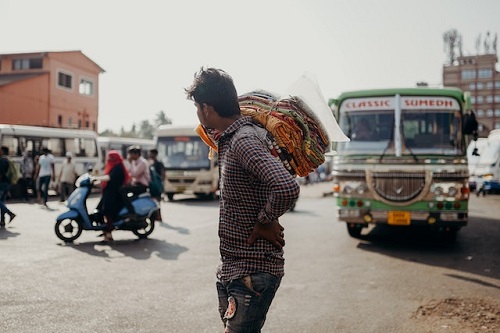
Uneasiness in a society and social division often leads to rising incidents of theft and robberies, physical assaults, and overall communal crime. So another dimension of state security is helping to deter crime in society by modernizing law enforcement forces into ‘smart policing‘. With ‘Safe city‘ programmes, video surveillance systems help ensure public safety by preventing street crimes or communal violence.
For example, video surveillance is a great tool to provide situational awareness to law enforcement officers, allowing them to quickly react to threats, proactively prevent criminal activities, mitigate ongoing conflicts, or at least provide post-incident investigation and, in result, press charges against a criminal.
Traffic management and road safety are also a part of the ‘Safe city’ system. Vehicle accidents take many lives everyday, leaving its victims injured or traumatized at best. Enforcing traffic rules and promoting safe driving habits is a life-saving duty. Luckily, with video surveillance systems, many tasks can be automated. For example, police officers patrol cars embedded with dash cams can single out license plates of missing cars from the vehicle traffic flow. City cameras can be on the automated lookout for illegal parking, traffic rules violations like overspeeding, lane crossing, etc. and integrated with fining systems. Let alone that recordings can be used for forensic purposes or city-wide search. In state-of-the-art video surveillance software like Xeoma the search is run in a matter of seconds or minutes, without the need to look through all 24/7 hours recordings.
Taking control of riots is also a part of security-related issues that video surveillance can help with. The quite popular nowadays face recognition technologies can capture a person’s face photo so that prosecutors can find the marauder or someone who injured people during a riot. A state-wide face recognition system can be a tireless tool that does a background search for missing people or wanted criminals, or a tracker of habitual criminal offenders, closely monitoring their actions.
Safety and beyond
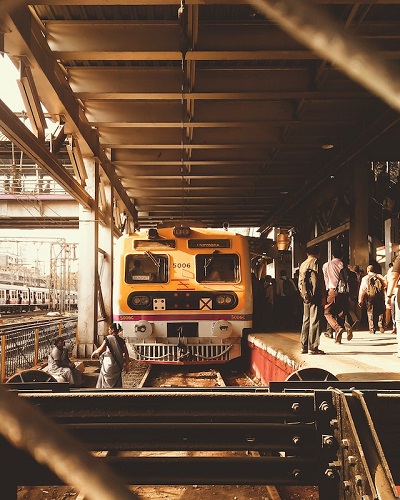
Apart from the criminal activities that occur in streets and roads, there are also governmental property and establishments that need protection of both commodities and people (staff and visitors). Video surveillance comes in handy for this task, in India as well as in other countries. State medical facilities can have video analytics allowing to spot long queues that call for service optimization. Video surveillance thermal cameras can substitute workers that do temperature check at the entrance so that they don’t have to be exposed to a constant risk to their health. Smart tools like slip and fall detector can detect if someone has fainted, etc. Facial recognition can be used for post-incident investigation, or for on-time notification about the appearance of a wanted criminal.
Schools and kindergardens can have the advances of artificial intelligence monitoring the premises for signs of weaponry or strangers. Besides, AI can be a tool to gather information on staff performance as well as enhance student engagement. Technologies like Face ID can be put to good use in the educational institutions for automation of entrance to campuses or buildings.
Maintaining internal law and order is an important duty of any state that wants to make the country a secure and safe place for its citizens to operate in so India dedicates much resources to that sphere of life.
Residential
In residential sector, both in public and private realms, video surveillance can help combat burglaries and murders. That’s why real estate builders are now increasing level of security by deploying surveillance cameras at new housing societies across India. Besides the common intrusion detection (which can be set up to trigger at any motion events, in night-time, or upon detection of specific types of objects), modern video analytics can be deployed to fulfill tasks like recognize a fire hazard, identify people doing high-rise littering, stop graffiti artists or vandals, etc. With dozens of reactions available – from mobile push notifications to custom reactions like VoIP call to rescue services – tenants can sleep peacefully at night knowing they won’t miss an alarming episode.
Businesses
In Indian businesses, video surveillance is a tool that can aid in increasing security and safety, boost productivity and improve operational efficiency, as well as have the machines do routine work instead of human workers. CCTV systems with AI help tackle away various challenges faced by businesses, whether in offices or retail outlets, HoReCa or entertainment establishments.
Businesses that are equipped with video surveillance systems face less burglaries or cashier frauds, while at the same time are endowed with vital statistics on the potential and existing clientele. Unique visitors calculator relies on the already mentioned Face Recognition algorithms and help estimate how many new customers visit the establishment in the selected time range. With live demographics analytics, a business owner can have valuable data on their clients. The Emotions Recognition can show unbiased truth of staff performance and customers satisfaction levels.
The banking and financial institutions have one more use for video surveillance: video cameras can be embedded in ATMs which is made obligatory with the late directives from the Reserve Bank of India. This way they can capture footage of customers operating the machine, their surroundings, which can be used for forensic purposes. Besides, financial organizations can benefit from CCTV systems by remastering them into a hi-tech panic button. The Smoke Detector in Xeoma video surveillance systems has the “Fire detection” add-on powered by artificial intelligence so it can detect either smoke or fire in an area – a waiting hall or offices. Sound recognition will notify authorized personnel or call the police if it recognizes screams or gunshots. Alternatively, with a simpler sound detector, the system can react to high levels of sound volume that can be a signal of a stressful environment and tension, or of a critical issue with bank appliances.
Industrial
The industrial sector mainly includes production units, oil and gas refineries, warehouses, and similar facilities, where CCTV video analytics can play an important role.
Proactive monitoring for early signs of hazards, ensuring compliance with safety and health regulations, control over productivity and filtering out faulty products reduce various types of losses. Besides, monitoring of the staff activities is known to have a reserving effect on workers thus creating a more productive atmosphere. For export-oriented manufacturing, especially in heavy machinery, remote acceptance features of video surveillance might be of great use, along with the regular trespassing detection in off-hours or 24/7 monitoring that CCTV provides.
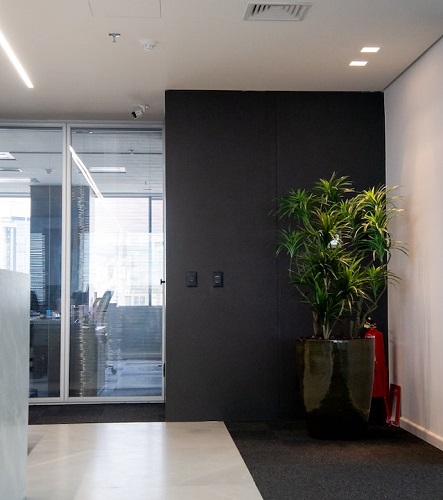
Video surveillance impediments in India
Despite the rapid digitalization of India, the country faces several hindrances factoring in.
For example, many of Indian video surveillance systems have to perform under challenging conditions – in rural environment with low network connectivity or power outage issues; in overcrowded areas that are heavy on artificial intelligence. Many CCTV systems are under-maintained which means they do not get proper maintenance or operation procedures after they are installed.
Another challenge is non-availability of security system components locally since it has been traditionally cheaper to import security products from China where production chain is streamlined than to start manufacture in India from scratch. However, in the long run, it has lead to the usual import-related challenges like high import duties or supply chain mismanagement due to inadequate infrastructure. For example, since AI computing is heavy – to the point, that it might require hundreds of servers for processing – such advanced hardware might be hard to get when it is needed, especially urgently.
Besides, industry experts note that Indian video surveillance engineers in the general might yet lack the knowledge and experience to understand the requirements for CCTV cameras and post-deployment expenditures like the need to maintain systems and cameras, provide adequate network bandwidth and storage space, as well as perform 24/7 supervision of cameras and go through the recordings. Cheaper yet affordable video surveillance solutions require security operators to go through thousands of hours of surveillance video footage which is both time-consuming and prone to human error; too complicated systems require too much dedication in training which quite often results in violation of exploitation requirements. Luckily, there are video surveillance solutions like Xeoma that are quite intuitive and at the same time offering various ways to help security operators which helps to do away with human-related errors and omissions.
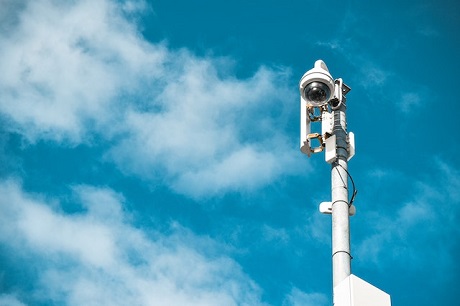
Technology Trends
In response to challenges comes innovation. Grasping the emerging developments helps to combat impediments in the way of massive video surveillance deployment in India. These video surveillance trends will thus quite likely give answer to the main challenges:
1. Cloud-based solutions are shifting processing onto the side of data centers available over the Internet. These are a great way to work around low supply of hardware that does away with import taxes, need for room for physical equipment, or maintenance duties.
2. Video Analytics help engage machine vision to make the video surveillance process easier and less prone to human errors. Instead of going through long hours of recordings, a video security operator can use event-based smart search to trim the recordings to only watch people, vehicles, colors, objects, etc. that were sought for. Advanced video analytics are based on neural networks technologies whose thinking capabilities are close to humans’ so that machines can anticipate threats, recognize abnormal events, analyze the quantity and quality of produce in the camera frame and more.
3. Data storage improvements: the unceasing challenge to invent yet another camera stream format with bigger compression without reducing image quality is driven by the need for consumption of less storage space – especially in systems that are legally obliged to keep recordings for 90 days straight. Disk arrays, Cloud storage, and various streaming and storage optimization (like the division of streams in Xeoma) all serve the purpose to minimize requirements of disk space for video surveillance footage.
4. Speaking of camera inventions, design innovation is the trend that India readily seizes for new form factors facilitate CCTV installation in urban environment and surroundings. Surface, recessed, electricity pole, and parapet installations make it easier to select the best places to put cameras in from the best view perspective, or for vandal- or weather-proof position. Thanks to innovations in productivity capacity, micro computers are good enough for small business CCTV systems and IoT sectors that otherwise wouldn’t have the budget or room to have a regular server-sized video surveillance system in place.
Certainly there are more trends in the video surveillance market, but what unites all of them is that they are designed to solve issues still not covered with existing solutions, and work in challenging environments. Despite natural hindrances, India has shown tremendous growth of CCTV presence in the country with some very good results in crime fighting, providing safer life and work conditions, and business operations improvement.
October 17, 2022
Read also:
Video surveillance for business and major systems
PDF about Xeoma Pro and Video Analytics
Video surveillance in the court house and governmental buildings
Residential complex: video surveillance installation
Xeoma Video surveillance: Is lean production real in the mining industry?
Professional Face Recognition by Xeoma for personal and business uses
Additional modules in Xeoma
Xeoma VMS in banks (PDF)
Xeoma VMS in sports (PDF)
CCTV on board a vehicle (PDF)
Anti-dumping with Xeoma (PDF)